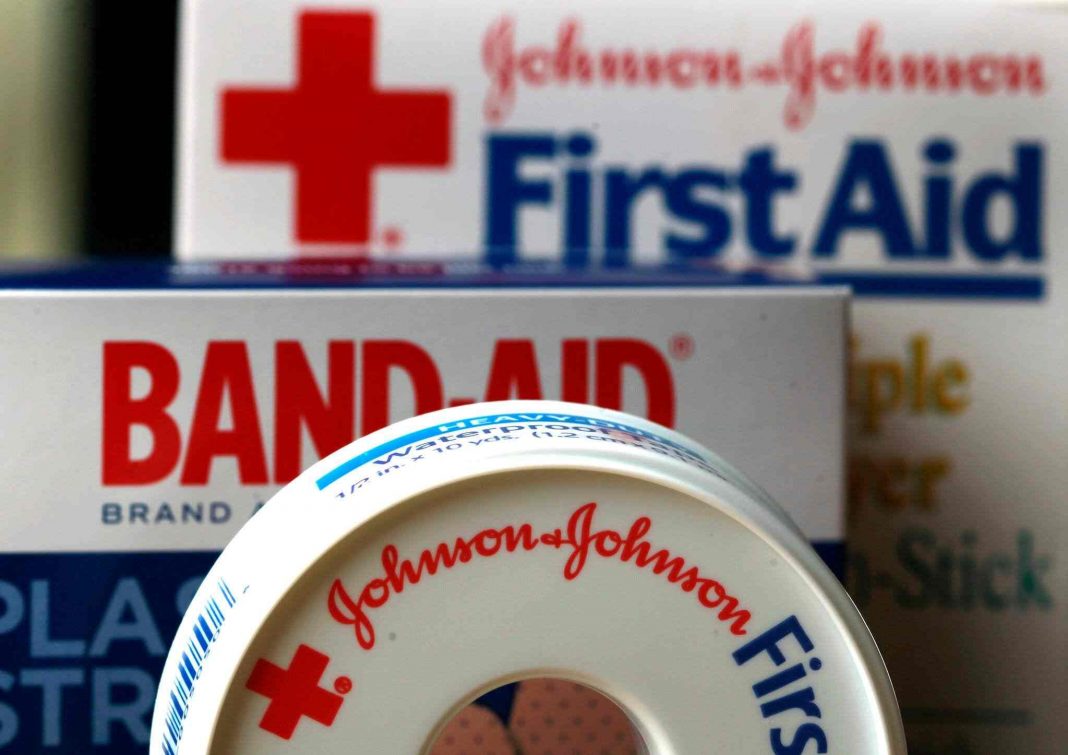Over the course of many generations, Johnson & Johnson has been identified with American health care — and, at times, with American health care fraud and abuse.
Now, the 135-year-old corporation is joining a growing list of renowned American companies that are dissolving in order to appease disgruntled shareholders and move on from recent issues, according to the Wall Street Journal.
Johnson & Johnson announced plans on Friday to spin off its consumer-products sector, which is known for well-known but not very profitable brands such as Tylenol, Band-Aid, and Neutrogena, into a new company. Johnson & Johnson will continue to focus on its more lucrative and faster-growing businesses in pharmaceuticals and medical technology.
Johnson & Johnson has been through a series of trials and tribulations over the last many years. The firm is now dealing with litigation stemming from its alleged participation in the opioid crisis as well as allegations that the talc originally used in its baby powder caused cancer in some of its consumers. Production challenges and concerns about uncommon side effects have caused the company’s single-shot Covid-19 vaccine, which was originally intended to be extensively used throughout the globe, to fall well short of its potential.
J&J was already experiencing generational shifts before the company announced its intention to split in half. The business announced during the summer that Joaquin Duato, who had previously served as the head of its pharmaceutical sector, would take over as CEO in January of this year. Alex Gorsky, who has been the company’s top executive for than a decade, will continue in his role as executive chairman.
Since Mr. Gorsky took over as CEO in 2012, the company’s stock price has more than quadrupled, thanks to a constant stream of new pharmaceuticals and experimental medications that have hit the market. Medications for inflammatory disorders and cancer have been the primary drivers of development in this market segment. However, such accomplishments have been coupled by a number of high-profile blunders.
Johnson & Johnson is facing hundreds of lawsuits alleging that their talc-based products were responsible for the development of cancer. It has been reported that the product is safe, however the corporation has halted sales of talc-based baby powder in North America last year. This fall, Johnson & Johnson transferred the obligations associated with that operation to a new subsidiary, which filed for bankruptcy protection earlier this month. The company will continue to be a subsidiary of Johnson & Johnson as part of the plan to split the businesses. Consumers who claim they were affected by Johnson & Johnson’s goods have criticised the restructuring, which they believe is a scheme to protect investors at the cost of customers who claim they were hurt by Johnson & Johnson’s products.
Johnson & Johnson was also under scrutiny for their participation in the opioid epidemic, both in the public and in the legal arena, at the same time. The corporation used to be a maker of dangerously addictive opiate medications, a business that it shut down completely in the United States last year due to regulatory concerns. Johnson & Johnson and other opioid manufacturers are facing billion-dollar lawsuits, despite recent victory in California and Oklahoma for the company and other opioid manufacturers.
At every stage of its history, the firm has benefited from consumer items that are widely used, none more so than its Johnson’s Baby range of shampoo, lotions, moisturising cream and powder for newborns that has been in production since 1903. Although such items have low profit margins, they have helped to establish Johnson & Johnson’s reputation as a friendly and caring firm in the public eye.
In spite of the company’s consumer items continuing to be popular, it is unlikely that they will help to develop the company’s medical operations, which are significantly more vital to the company’s financial well-being.
Johnson & Johnson, which began as a manufacturer of surgical dressings in 1886, has grown to become the world’s biggest health-care firm by many criteria. The two distinct corporations will be gigantic even if they operate as stand-alone enterprises. Approximately $77 billion in sales is estimated to be generated by the pharmaceutical and medical devices segment this year. Furthermore, it is expected that the consumer health industry would generate $15 billion in sales.
However, although the Covid vaccination, which generates just $2.5 billion in annual sales, is a modest component of Johnson & Johnson’s total business, it provided the corporation with a high-profile chance to repair some of its recent brand damage.
However, the vaccine has fallen short of hopes that it will serve as a workhorse for the worldwide immunisation campaign, particularly in hard-to-reach groups such as children. A single dosage of the Johnson & Johnson vaccination is required instead of many doses of the vaccines from Pfizer, Moderna, and AstraZeneca.
The business had aimed to create a billion shots this year, but now expects to make just around half of that total amount. Due to manufacturing issues, the company’s output has been significantly reduced, most notably those originating from contamination at a Baltimore factory operated by a contract manufacturer, Emergent BioSolutions.
In the United States, less than 16 million individuals have received the full dose of Johnson & Johnson’s vaccine, compared to 108 million for Pfizer and 71 million for Moderna, according to the company.

